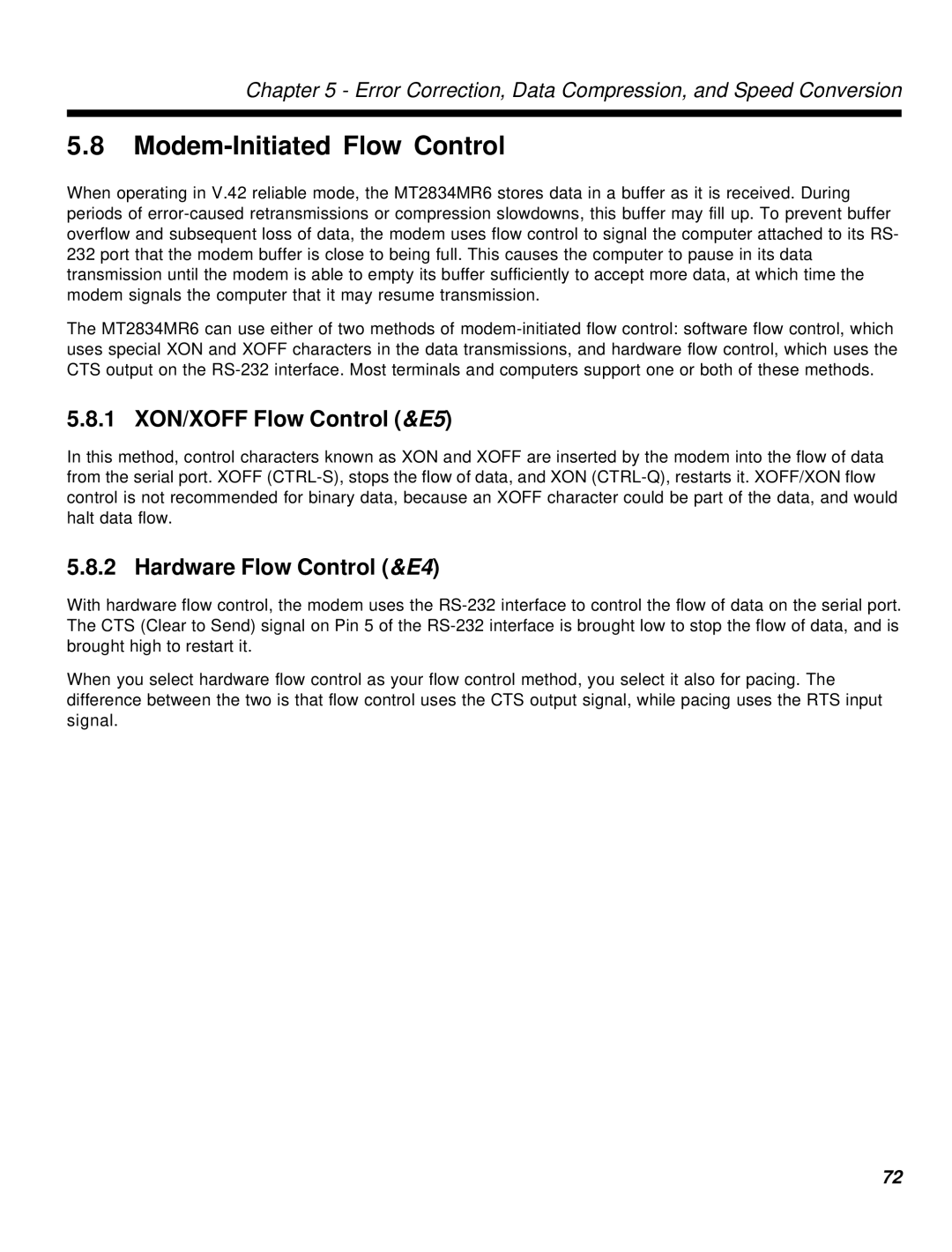Chapter 5 - Error Correction, Data Compression, and Speed Conversion
5.8Modem-Initiated Flow Control
When operating in V.42 reliable mode, the MT2834MR6 stores data in a buffer as it is received. During periods of error-caused retransmissions or compression slowdowns, this buffer may fill up. To prevent buffer overflow and subsequent loss of data, the modem uses flow control to signal the computer attached to its RS- 232 port that the modem buffer is close to being full. This causes the computer to pause in its data transmission until the modem is able to empty its buffer sufficiently to accept more data, at which time the modem signals the computer that it may resume transmission.
The MT2834MR6 can use either of two methods of modem-initiated flow control: software flow control, which uses special XON and XOFF characters in the data transmissions, and hardware flow control, which uses the CTS output on the RS-232 interface. Most terminals and computers support one or both of these methods.
5.8.1 XON/XOFF Flow Control (&E5)
In this method, control characters known as XON and XOFF are inserted by the modem into the flow of data from the serial port. XOFF (CTRL-S), stops the flow of data, and XON (CTRL-Q), restarts it. XOFF/XON flow control is not recommended for binary data, because an XOFF character could be part of the data, and would halt data flow.
5.8.2 Hardware Flow Control (&E4)
With hardware flow control, the modem uses the RS-232 interface to control the flow of data on the serial port. The CTS (Clear to Send) signal on Pin 5 of the RS-232 interface is brought low to stop the flow of data, and is brought high to restart it.
When you select hardware flow control as your flow control method, you select it also for pacing. The difference between the two is that flow control uses the CTS output signal, while pacing uses the RTS input signal.
